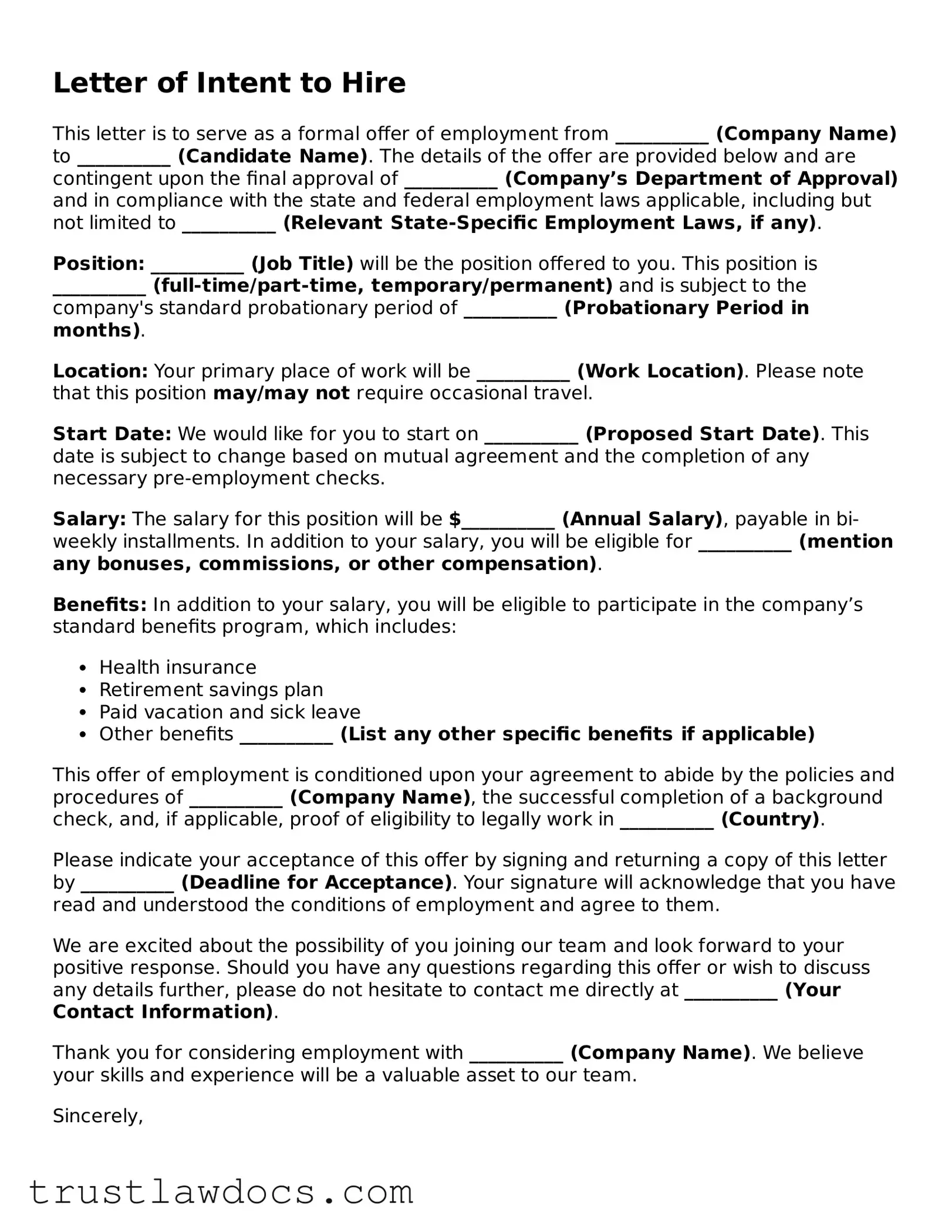What is a Letter of Intent to Hire?
A Letter of Intent to Hire is a formal document that outlines a company's intention to employ a particular candidate. It serves as a preliminary agreement between the employer and the potential employee, discussing the terms of employment before signing a binding contract. While not a definitive contract, it provides a framework for the employment relationship and gives both parties a clear understanding of the expectations and responsibilities.
Why is a Letter of Intent to Hire important?
It plays a crucial role in the hiring process by ensuring that both the employer and the candidate have a mutual understanding of the employment conditions. This document helps to clarify the position, salary, start date, and other key terms of employment, reducing the likelihood of misunderstandings in the future. It also demonstrates the employer's commitment to the candidate, which can improve the candidate's confidence in accepting the job offer.
What should be included in a Letter of Intent to Hire?
A comprehensive Letter of Intent to Hire should include the job title, start date, full-time or part-time status, salary or wage, benefits (if any), working hours, and any other conditions or expectations of the employment. It should also have a clause that specifies the letter is not a legally binding contract of employment but an expression of intent to enter into such an agreement, subject to further negotiations and agreement on both sides.
Is a Letter of Intent to Hire legally binding?
Generally, a Letter of Intent to Hire is not considered a legally binding employment contract. However, it may contain provisions that can be legally binding, such as confidentiality agreements or non-compete clauses. It is crucial for both parties to carefully review the letter to understand which parts, if any, are legally enforceable.
Can a Letter of Intent to Hire be withdrawn?
Yes, either party can typically withdraw from a Letter of Intent to Hire before signing a formal employment contract. Since this document is usually not legally binding regarding the employment offer itself, withdrawing from it doesn't generally carry legal consequences. However, if there are any legally binding clauses included, those may still be enforceable even if the letter is withdrawn.
How does a Letter of Intent to Hire differ from an Employment Contract?
While a Letter of Intent to Hire outlines the intention to form an employment relationship under specified terms, an Employment Contract is a legally binding document that establishes this relationship formally. The contract includes detailed employment terms, such as duties, confidentiality obligations, and termination conditions. Once signed, both parties are legally obligated to adhere to its terms, making it more comprehensive and binding than a letter of intent.
What steps should be taken after receiving a Letter of Intent to Hire?
Upon receiving a Letter of Intent to Hire, the candidate should carefully review all the terms outlined to ensure they understand and agree with the conditions of potential employment. It's advisable to consult a legal professional if there are any questions or unclear parts. If the terms are acceptable, the candidate can express their intent to proceed, leading to negotiations for a formal employment contract. This is also an opportune time to ask any outstanding questions or discuss modifications to the proposed terms.
